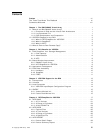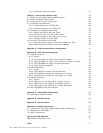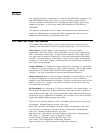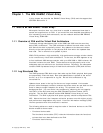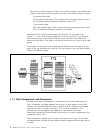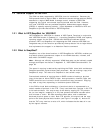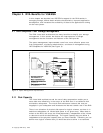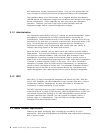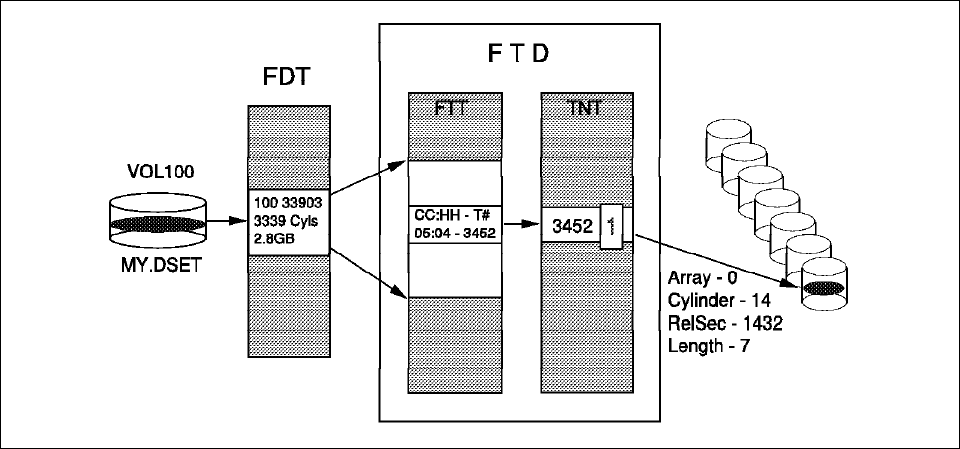
The functional track directory (FTD) is the collective name for two tables that
together map each functional track to an area in the RVA′s physical storage:
−
Functional track table
The functional track table (FTT) contains the host-related pointers, that is,
the functional-device-related track pointers of the FTD.
−
Track number table
The track number table (TNT) contains the back-end data pointers of the
FTD. A
reference counter
is also part of this table.
Although the FTD consists of two tables, we discuss it as one entity (see
Figure 1). In fact, each functional track has an entry in the FDT. If a functional
track contains data, its associated FTD entry has a pointer to the FBA block
where the data starts. The data of a functional track may fit on one or more FBA
blocks.
If the data of a functional track is updated, the RVA puts the new data in a new
place in the log structured file, and the FTD entry points to the new data location.
There is no update in place.
Figure 1. The RAMAC Virtual Array Tables
1.1.3 Data Compression and Compaction
All data in the RVA is compressed; compression occurs when data enters an
RVA. In addition, the gaps between the records, as they appear on the CKD
devices, are removed before the data is written to disk. Similarly, the unused
space at the end of a track is removed. This is called
compaction
. The
compression and compaction ratio depends on the nature of the data.
Experience shows that RVA customers can achieve an overall compression and
compaction ratio of 3.6:1.
Data compression speeds up the transfer from and to the arrays. It increases
the effectiveness of cache memory because when compressed more data can fit
in cache.
2 RAMAC Virtual Array, Peer-to Peer Remote VSE/ESA




